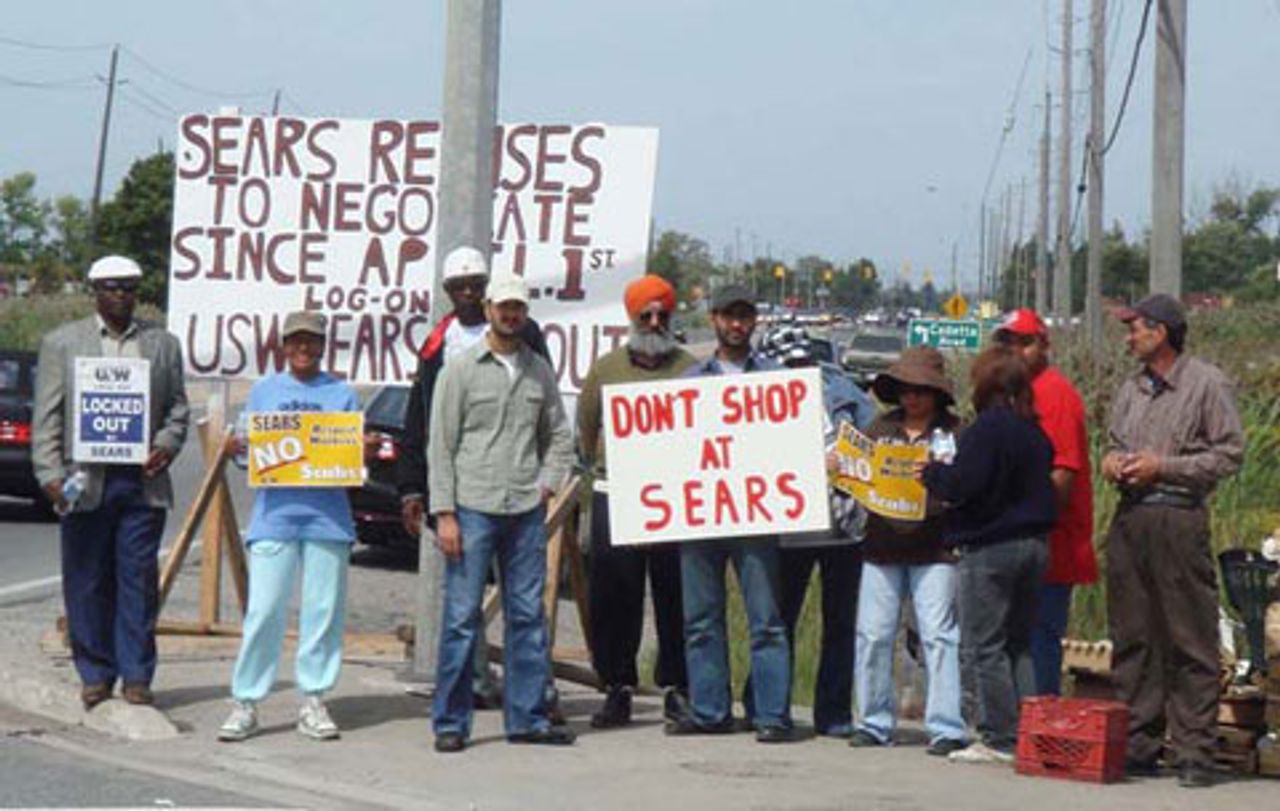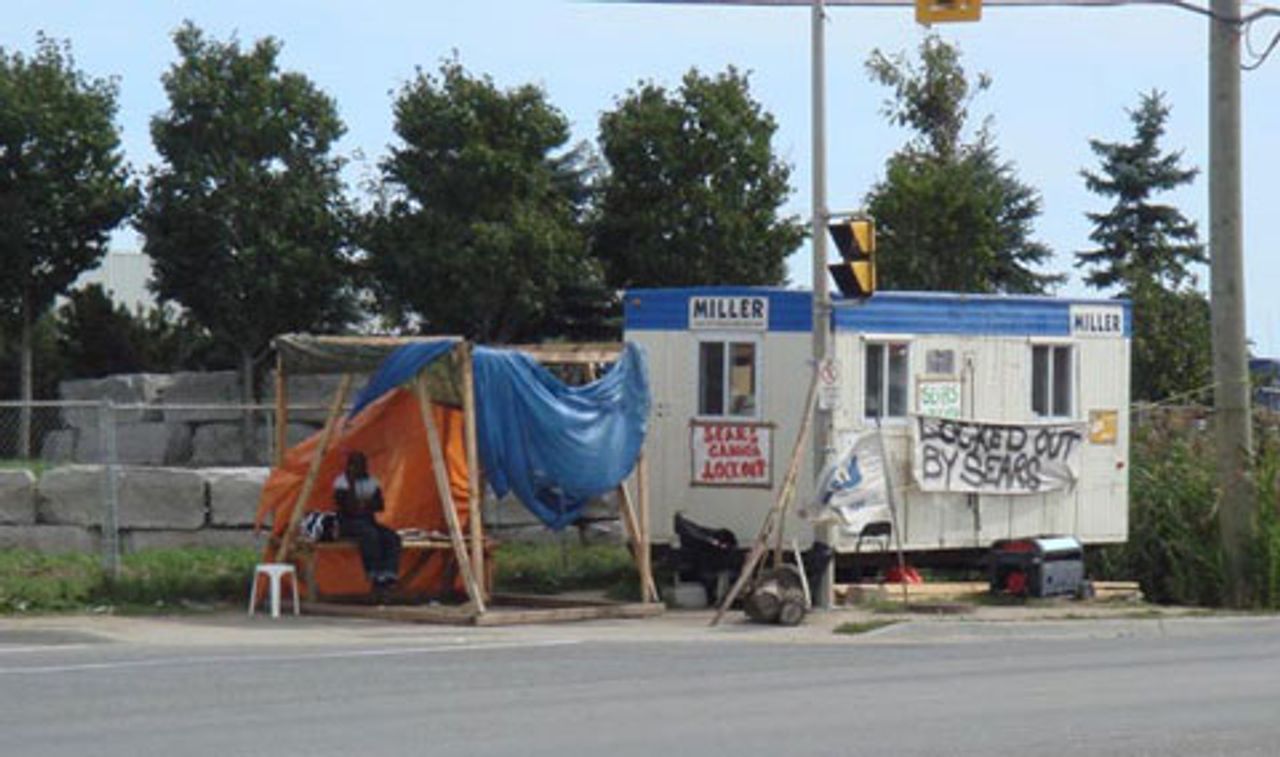Reporters from the World Socialist Web Site visited the picket line of locked out Sears Canada warehouse workers this past weekend in Vaughn, Ontario just northwest of Toronto. Five hundred workers, members of United Steelworkers Local 9537, have been locked out by the retail giant since April 1.
 Workers picket at the entrance to the Sears’ warehouse in Vaughn, north of Toronto
Workers picket at the entrance to the Sears’ warehouse in Vaughn, north of TorontoSears is demanding the right to unilaterally cut pensions, vacation time, health care and other benefits, including bereavement leave. The retailer has insisted that the entire benefits package for the unionized warehouse staff be dictated by “company policy”, not by contractual requirement. In other words, Sears is demanding that any benefits they dispense shall be determined solely by management, be subject to change at any time, and be commensurate with the few benefits received by retail workers in the rest of its stores.
Sears employs 30,000 workers nationwide. Two percent of its workforce is unionized, including the Vaughn workers who joined the USW two years ago. Over the last decade the company has consistently recorded annual profits of between $100 and $200 million. Last year, it reported $245 million in profits. Chairman of the Board Edward Lampert has an estimated personal net worth of $2 billion.
Since the April 1 lockout, management has refused to negotiate with the union bargaining committee and has hired hundreds of scabs to supply its vast network of stores across the province and the country. The company has successfully petitioned the courts for picketing restrictions at its Vaughn Distribution Centre. Workers can only stop trucks leaving the complex for a maximum of five minutes.
Security goons, hired by AFI International—a professional strikebreaking outfit—regularly intimidate pickets. To ensure a guaranteed and uninterrupted flow of goods, Sears has dispersed shipments to several makeshift distribution centers elsewhere in the Greater Toronto Area (GTA) and re-directed other materials to its non-union Belleville, Ontario facility.
 Picket trailer
Picket trailerIn their most recent provocation, management mailed letters directly to all union members late last week that outlined the company’s derisory offer and demanded that workers individually contact management immediately to either accept the offer and be scheduled for work or remain locked out. This was not the first time that Sears tried such measures. In late May, using provisions in the Ontario Labour Relations Act, it forced a “final offer vote” over the heads of the local bargaining committee. However, workers voted by 60 percent to defeat this maneuver.
While workers have demonstrated their determination to fight, the United Steelworkers and the Ontario Federation of Labour have deliberately isolated their struggle from the hundreds of thousands of unionized workers throughout the province.
Hostile to any mobilization of the working class that would cut across their relations with the corporations and the government, union officials are promoting a toothless “Boycott Sears” campaign to cover up their betrayal.
The USW has a long record of treachery in Canada and the US, dating back to its collaboration in shutdown of the steel mills and the gutting of workers’ jobs, wages and pension benefits. More recently the USW worked for the defeat of Vale-Inco strike in Sudbury and Port Colborne, enforcing every restrictive picket line injunction issued by the courts, and working to demobilize every attempt by the strikers to strengthen their strike.
Early in the strike the USW cut a deal with the company that compelled members from another USW local to cross the picket line and perform the work of the strikers. When hundreds of workers erupted in anger and, in defiance of the courts, mounted blockades at two key Vale sites, it was USW officials who quickly suppressed the action. In the end, striking miners and mill workers were forced to accept a massive concessions contract.
These realities highlight the urgent necessity of workers breaking from these outlived organizations and forming new organizations of struggle.
Subscribe to the IWA-RFC Newsletter
Get email updates on workers’ struggles and a global perspective from the International Workers Alliance of Rank-and-File Committees.
